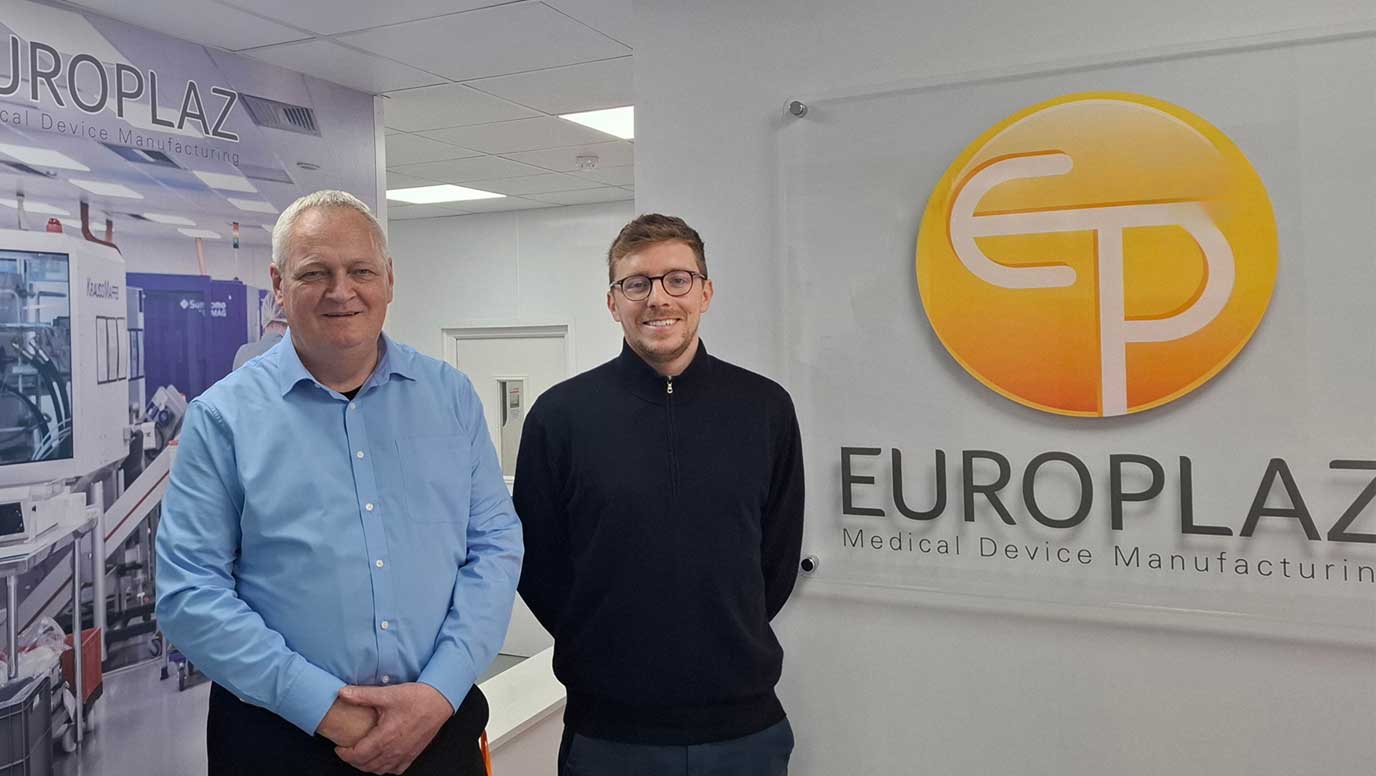Europlaz gives birth to neonatal innovation to help save babies’ lives

Europlaz, which has more than 40 years’ experience in manufacturing products for the medical device, diagnostics and life sciences sectors, has developed an integrated ‘sidestream’ CO2 sampling port that is joined to the side of its existing neonatal flow sensor.
This patented addition enables clinicians to follow the correct protocols of using both lung protective volume control and CO2 monitoring, giving a baby the best chance of survival and limiting the possibility of longer-term conditions, such as cerebral palsy or lung disease.
It achieves this by combining the sensor for measuring flow volume with the optimally placed sampling port for safely extracting gas for tidal flow CO2 monitoring, reducing the ‘dead space’ found in existing products and ensuring more accurate readings.
Southminster-based Europlaz, which has instituted a major recruitment drive, has been developing the innovation for years and believes now is the time for ventilator manufacturers to consider switching to this neonatal flow sensor to save lives, reduce costs to the NHS and avoid expensive litigation.
Katy O’Keeffe, Marketing and Strategy Director, commented: “In essence, our new flow sensor helps tiny babies on ventilators breathe safely. It combines two sensors into one smaller device, with one sensor measuring how much air is going in and out of the lung and the other measuring carbon dioxide being expelled, which shows how effective the lungs are working.
“Prior to this innovation, the two sensors had to sit next to each other, and it was like making a baby breathe through a very long snorkel, making it harder to ensure carbon dioxide was getting out of the pathway. Too much carbon dioxide can harm the brain.
“Our new sensor makes the ‘snorkel’ much shorter and checks that babies are getting rid of the right amount of carbon dioxide to keep them safe and healthy.”
Momentum is growing with two global manufacturers adopting Europlaz’s new flow sensors and trials set to start with Barts NHS Trust in London. This will provide the clinical evidence that many of the ventilator manufacturers have been seeking.
Frede Jensen, Product Development Manager at Europlaz, says: “We are dealing with the tiniest of lives so it is imperative that we give clinical teams the best possible technology to help them do their jobs.
“This is exactly what this innovation does, with the side sampling port delivering the stable and accurate readings of CO2 being exhaled that they require to better inform the care of the child and the level of ventilation support required.
“Europlaz has been manufacturing neonatal flow sensors for more than 10 years and we have sold over one million to date – all without the sampling port. This must change and we believe that when one hospital or manufacturer commits to it, the rest will follow.
“It just makes too much sense not to. Why not embrace a product that gives you greater clarity, greater control and a greater chance of saving a baby’s life?
“There is also a financial element to it as well, with 60 per cent of the NHS’ Resolution’s £9 billion liability budget spent in 2018/19 dealing with cases involving maternity care.”
Europlaz is investing heavily in ramping production for the new neonatal flow sensor with a new robotic welder due to arrive shortly. This is the central element to a modern production cell that uses vision controlled micro-robotic wire welding to deliver highly consistent sensor quality, performance and reliability.
Frede, who has extensive design, development and manufacturing experience in neonatal products, added: “This latest piece of equipment is very impressive, with the robot capable of welding a 13-micron precious metal wire (which is 1/3 of the thickness of a human hair) to a surface smaller than a pin head with 5-micron precision.
“Importantly, it gives us the repeatable quality that we know is required and the confidence that our sensors will deliver accurate readings time and again. We can also increase capacity with the genuine expectation that we can supply 500,000 sensors every year.”
The innovation being added to the neonatal sensor is just one of the advancements Europlaz is currently working on in this space. It is also a few weeks away from starting exciting trials of its own range of neonatal ventilation monitors at four major UK hospitals.

